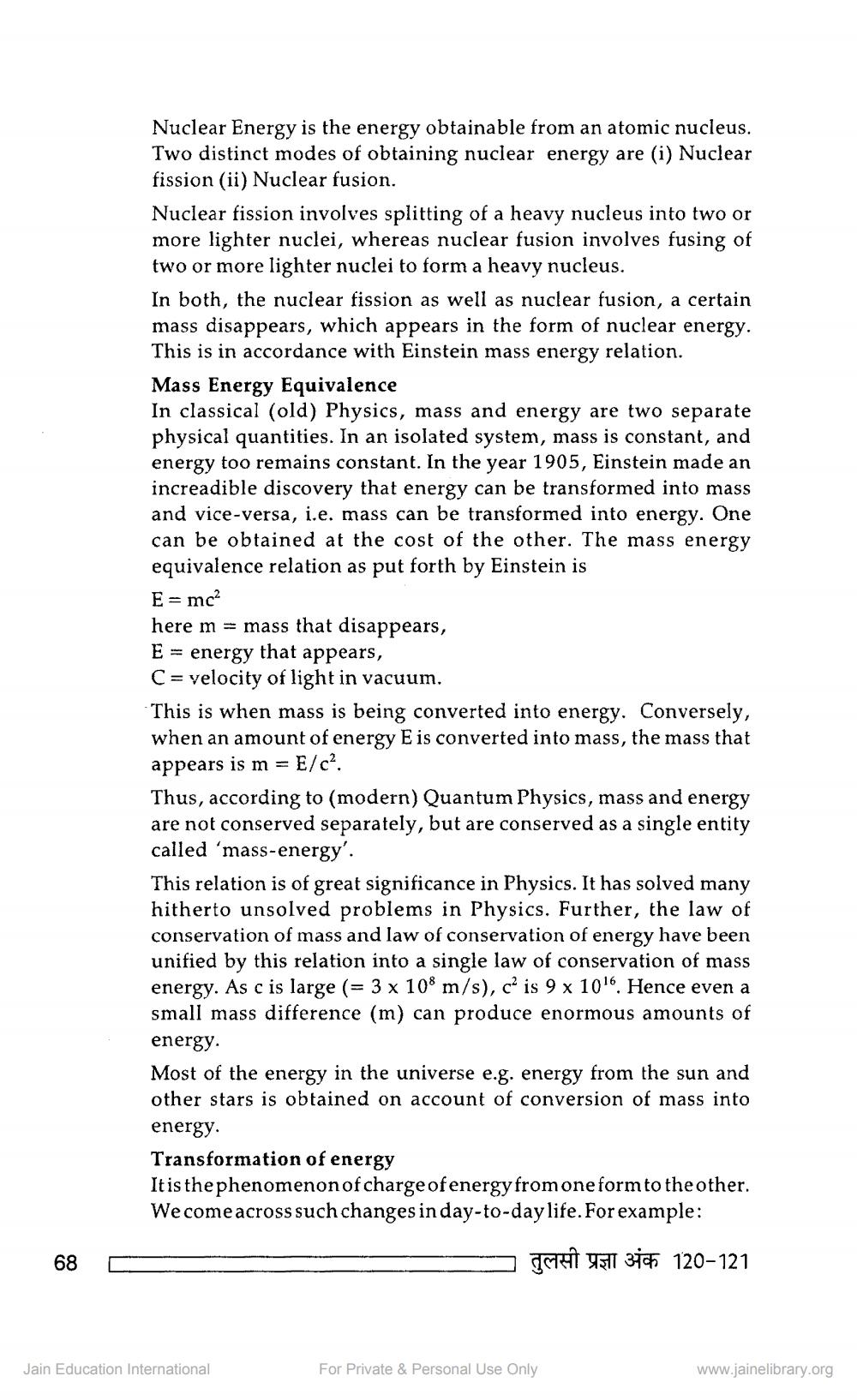________________
Nuclear Energy is the energy obtainable from an atomic nucleus. Two distinct modes of obtaining nuclear energy are (i) Nuclear fission (ii) Nuclear fusion. Nuclear fission involves splitting of a heavy nucleus into two or more lighter nuclei, whereas nuclear fusion involves fusing of two or more lighter nuclei to form a heavy nucleus. In both, the nuclear fission as well as nuclear fusion, a certain mass disappears, which appears in the form of nuclear energy. This is in accordance with Einstein mass energy relation. Mass Energy Equivalence In classical (old) Physics, mass and energy are two separate physical quantities. In an isolated system, mass is constant, and energy too remains constant. In the year 1905, Einstein made an increadible discovery that energy can be transformed into mass and vice-versa, i.e. mass can be transformed into energy. One can be obtained at the cost of the other. The mass energy equivalence relation as put forth by Einstein is E = mc here m = mass that disappears, E = energy that appears, C = velocity of light in vacuum. This is when mass is being converted into energy. Conversely, when an amount of energy E is converted into mass, the mass that appears is m = E/c? Thus, according to (modern) Quantum Physics, mass and energy are not conserved separately, but are conserved as a single entity called 'mass-energy'. This relation is of great significance in Physics. It has solved many hitherto unsolved problems in Physics. Further, the law of conservation of mass and law of conservation of energy have been unified by this relation into a single law of conservation of mass energy. As c is large (= 3 x 108 m/s), ca is 9 x 1016. Hence even a small mass difference (m) can produce enormous amounts of energy Most of the energy in the universe e.g. energy from the sun and other stars is obtained on account of conversion of mass into energy. Transformation of energy It is the phenomenonofcharge of energy from one form to the other. Wecome across such changes in day-to-day life. For example:
68
C
THE US 310 120-121
Jain Education International
For Private & Personal Use Only
www.jainelibrary.org




